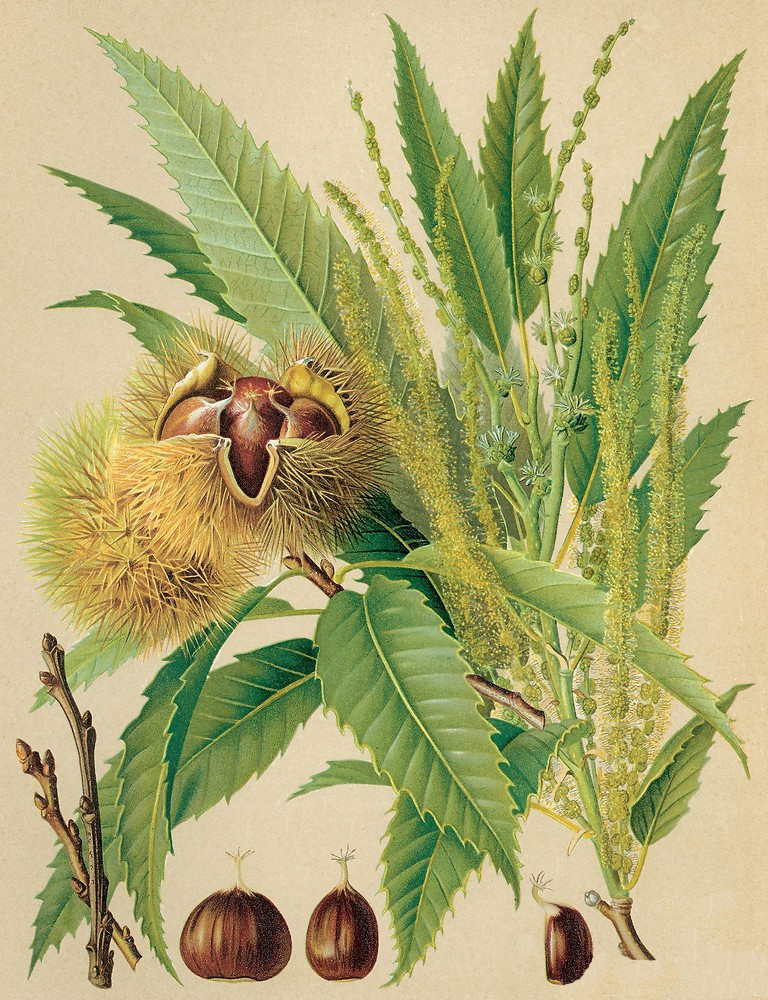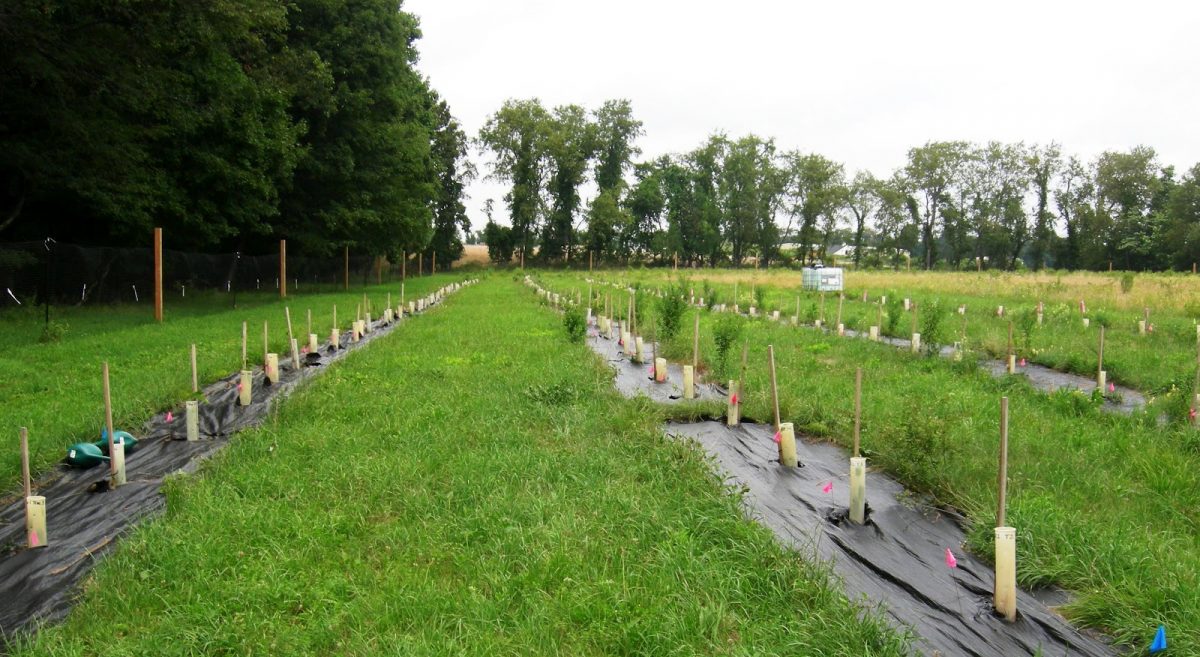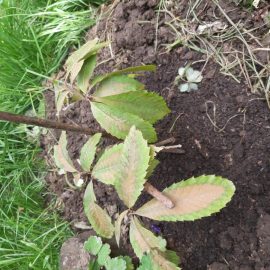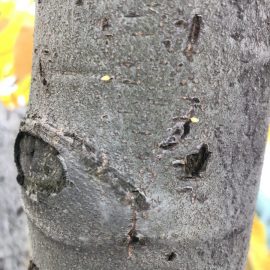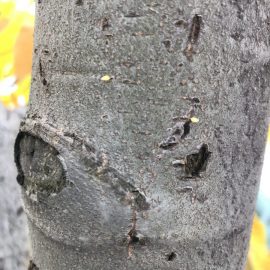Sweet chestnut, planting, growing and harvesting
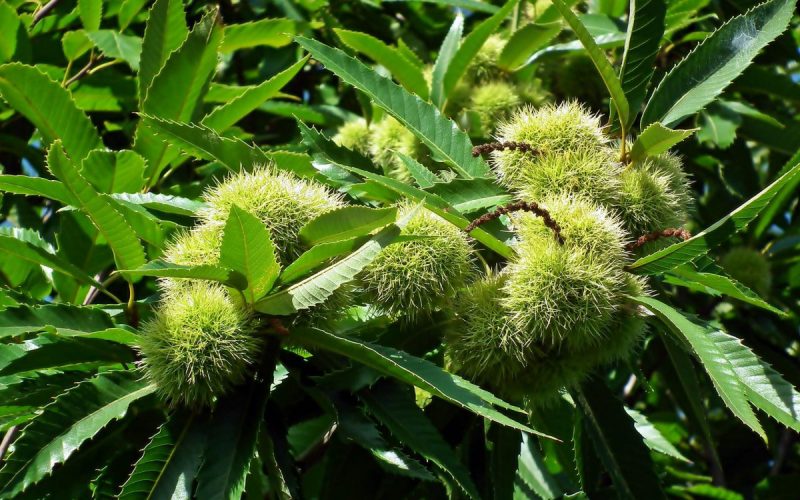
Sweet chestnut (Castanea sativa) is a species native to southern Europe and Asia Minor. Sweet chestnut can also be used for decorative purposes or wood. Recently, the interest in cultivating this species for fruits has increased, given their nutritional content. They have properties similar to wheat seeds. Chestnuts contain starch, vegetable fiber, protein, fat, potassium, phosphorus, magnesium, sulfur, calcium, and vitamins (A, B1, B2, E, C).
Growing and fruiting particularities
It grows as vigorous trees, 15 to 25 meters tall. The trunk is vigorous and slightly twisted, and the tree forms broad, pyramidal, or globular crowns. Forms vegetative buds and mixed buds. They are arranged solitarily on branches.
The leaves are toothed and elongated (lanceolate) and can reach 28 cm in length. It is a unisexual monoecious species. The same individual forms female flowers and male flowers. The female flowers are clustered 2-3 in the involucre, and as it matures acquire the appearance of a hedgehog. Male flowers can form many types of stamens, but those with long staminal filaments are the most productive varieties.
Sweet chestnuts can also form flowers, called catkins. They are 30 cm long. At the base are placed the female flowers clustered in inflorescences, and at the topside are the male flowers. The fruit is an achene. Its color is brown-reddish and may contain one or two seeds.
Climate and soil requirements
Temperature is a limiting factor for sweet chestnut cultivation. It grows and develops normally in areas where the average annual temperature exceeds 9 ° C. It prefers long and hot autumns, being sensitive to sudden frosts. During the vegetative dormancy, it withstands temperatures down to -25 ° C. Light is not an important factor for this species. It grows well even in semi-shade conditions. It needs about 700 mm of rainfall per year, evenly distributed over the vegetative growth period. On the other hand, sweet chestnuts do not tolerate excess moisture in the soil, and water should not be less than 4 meters deep. It prefers fertile, deep soils with a high aero-hydric regime and an acidic pH (4.8 – 6.5).
Cultivation
Soil preparation
The land on which the plantation will be established should be chosen according to the climate and soil requirements of the species. Soil preparation is part of the general technology for setting up fruit plantations. The plot must be cleared from the preceding crop and cleaned of all plant debris (including underground). After this operation, the soil can be leveled and fertilized with manure. Fertilization can be supplemented with phosphorus and potassium.
Planting
The optimal planting period is autumn when the trees have entered the vegetative dormancy. The following planting schemes are recommended: 9 meters distance between rows and 8 meters distance between plants per row. After establishing the planting scheme, the land must be picketed. The operation consists of marking the position of each tree on the field with a stake.
Several varieties (2-3) should be used in the plantation to ensure optimal pollination. The next steps are digging the pits and planting. Pits can be dug by hand or with a tractor and drill. These can be 40 x 40 x 40 cm.
Root pruning
Before planting, the roots should be trimmed. The operation is performed to remove the damaged portions and to smooth out the wounds on the root. It also rejuvenates the root system. The dead roots must be completely removed, and the other ones should be shortened to 20-22 cm. After pruning, the roots must be soaked. Mudding means dipping the root into a mixture of yellow soil, fresh manure, and water. The role of the mud layer is to ensure a higher humidity around the root system. The mud must have the consistency of sour cream.
The interval between rows can be maintained with grass. Lolium perenne is recommended and sowing can be done every 4 years. The grass needs to be mowed when it reaches a 5 – 10 cm height and kept on the ground to form a mulch layer. The interval between rows can also be kept clean by applying a non-selective herbicide.
Fertilization
Additional fertilization is necessary in commercial plantations. For correct fertilizer dosing, it is necessary to perform agrochemical soil analyses. Fertilisation also ensures better resistance to diseases, pests, and environmental conditions and prolongs the life of the plantation. Apart from fertilization, irrigation provides important yield increases. Irrigation is recommended when the annual rainfall does not reach 700 mm/year. The most efficient irrigation methods are micro-sprinkler and drip irrigation.
Recommended products
-
You can find products on a different store
Change Store -
You can find products on a different store
Change Store -
You can find products on a different store
Change Store -
You can find products on a different store
Change Store -
You can find products on a different store
Change Store -
You can find products on a different store
Change Store -
You can find products on a different store
Change Store -
You can find products on a different store
Change Store -
You can find products on a different store
Change Store -
You can find products on a different store
Change Store -
You can find products on a different store
Change Store -
You can find products on a different store
Change Store -
You can find products on a different store
Change Store -
You can find products on a different store
Change Store -
You can find products on a different store
Change Store -
You can find products on a different store
Change Store -
You can find products on a different store
Change Store -
You can find products on a different store
Change Store -
You can find products on a different store
Change Store -
You can find products on a different store
Change Store -
You can find products on a different store
Change Store -
You can find products on a different store
Change Store -
You can find products on a different store
Change Store -
You can find products on a different store
Change Store
Pest and disease control
It is necessary for chestnut plantations and is achieved by using specific products. Among the diseases that can occur in chestnuts, we mention chestnut cancer, leaf spot, downy mildew, and among the pests, the horse-chestnut leaf miner, chestnut wasp, and leafhoppers.
Prunings
An important work is tree maintenance through pruning. Chestnut trees do not require rigorous pruning because they naturally form well-aerated crowns. One thing to bear in mind is the location of the fruit buds. In the case of the edible chestnut cultivated in Europe, the fruiting buds are located on the top side of the branches. In this case, the twigs shouldn’t be shortened every year, instead the old branches should be removed. This will stimulate the growth of new branches.
Recommended products
-
You can find products on a different store
Change Store -
You can find products on a different store
Change Store -
You can find products on a different store
Change Store -
You can find products on a different store
Change Store -
You can find products on a different store
Change Store -
You can find products on a different store
Change Store -
You can find products on a different store
Change Store -
You can find products on a different store
Change Store -
You can find products on a different store
Change Store -
You can find products on a different store
Change Store -
You can find products on a different store
Change Store -
You can find products on a different store
Change Store -
You can find products on a different store
Change Store -
You can find products on a different store
Change Store -
You can find products on a different store
Change Store -
You can find products on a different store
Change Store -
You can find products on a different store
Change Store -
You can find products on a different store
Change Store -
You can find products on a different store
Change Store -
You can find products on a different store
Change Store -
You can find products on a different store
Change Store -
You can find products on a different store
Change Store -
You can find products on a different store
Change Store -
You can find products on a different store
Change Store
Also, it is necessary to remove water sprouts, and dry or frost-affected branches, as well as the basal shoots. The crown should be aerated and the branches should be evenly distributed.
Recommended products
-
You can find products on a different store
Change Store -
You can find products on a different store
Change Store -
You can find products on a different store
Change Store -
You can find products on a different store
Change Store -
You can find products on a different store
Change Store -
You can find products on a different store
Change Store -
You can find products on a different store
Change Store -
You can find products on a different store
Change Store -
You can find products on a different store
Change Store -
You can find products on a different store
Change Store -
You can find products on a different store
Change Store -
You can find products on a different store
Change Store -
You can find products on a different store
Change Store -
You can find products on a different store
Change Store -
You can find products on a different store
Change Store -
You can find products on a different store
Change Store -
You can find products on a different store
Change Store -
You can find products on a different store
Change Store -
You can find products on a different store
Change Store -
You can find products on a different store
Change Store -
You can find products on a different store
Change Store -
You can find products on a different store
Change Store -
You can find products on a different store
Change Store -
You can find products on a different store
Change Store
Harvesting
The optimum time for harvesting is when the chestnut fruit falls from the tree. Sweet chestnut harvesting is a difficult technological operation because they are closed in involucre (casing) and after harvesting this cover must be removed. Harvesting can be done by mechanically shaking the trees or manually.














































































































































































































































































































































































































































